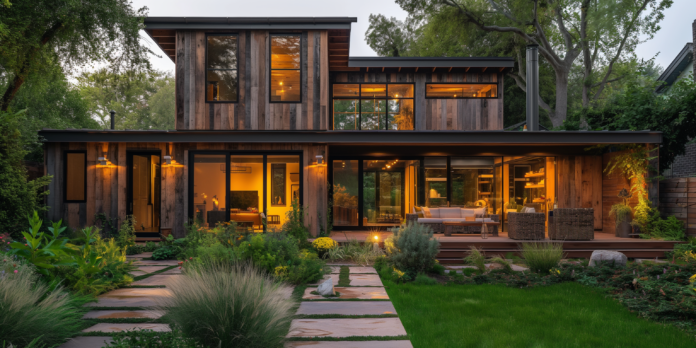In today’s rapidly evolving architectural landscape, the demand for sustainable building practices has never been higher. As we strive to mitigate the impact of climate change, using green building materials is at the forefront of this movement. These materials reduce the environmental footprint and enhance our living spaces’ overall efficiency and health.
This blog post explores the top green building materials that are revolutionising the construction of sustainable homes, ensuring a harmonious balance between aesthetics, functionality, and environmental responsibility.
1. Bamboo
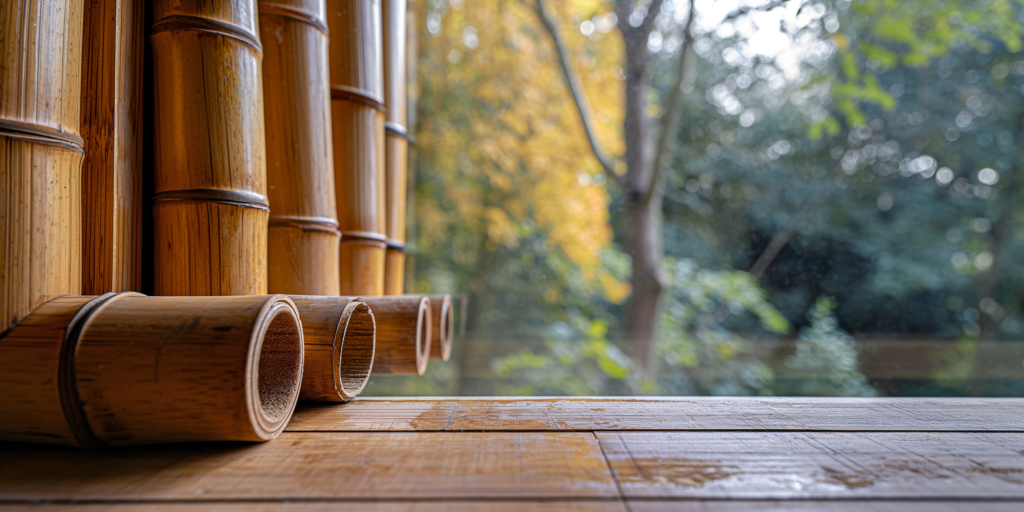
Why Bamboo? Bamboo is renowned for its rapid growth rate and renewability. It can be harvested in just three to five years, unlike traditional hardwoods, which can take decades to mature. Bamboo’s tensile strength also rivals steel’s, making it an incredibly durable building material.
Applications in Sustainable Homes:
- Flooring: Bamboo flooring is not only aesthetically pleasing but also highly durable.
- Structural Components: Bamboo can be used for scaffolding, framing, and even as a substitute for steel reinforcement in concrete.
- Decorative Elements: Its natural texture and versatility make bamboo an excellent choice for decorative finishes and furniture.
2. Reclaimed Wood
Why Reclaimed Wood? Using reclaimed wood reduces the demand for new lumber, thereby preserving forests. It also repurposes materials that would otherwise contribute to landfill waste. Reclaimed wood often boasts unique textures and characters that new wood cannot replicate.
Applications in Sustainable Homes:
- Flooring and Paneling: Reclaimed wood’s rich history and durability make it perfect for flooring and wall panels.
- Furniture: Custom pieces crafted from reclaimed wood add a rustic charm to any home.
- Structural Uses: Reclaimed beams and joists can sustainably provide structural support.
3. Recycled Steel
Why Recycled Steel? Steel is one of the most recycled materials on the planet, and using recycled steel significantly reduces the energy consumption associated with producing new steel from raw ore. It is also incredibly strong and durable, ensuring long-lasting structural integrity.
Applications in Sustainable Homes:
- Framework: Steel frames provide a robust and stable structure for homes.
- Roofing: Steel roofing is durable, recyclable, and often contains a high percentage of recycled content.
- Reinforcement: Recycled steel can be used in concrete reinforcement, reducing the need for new materials.
4. Hempcrete
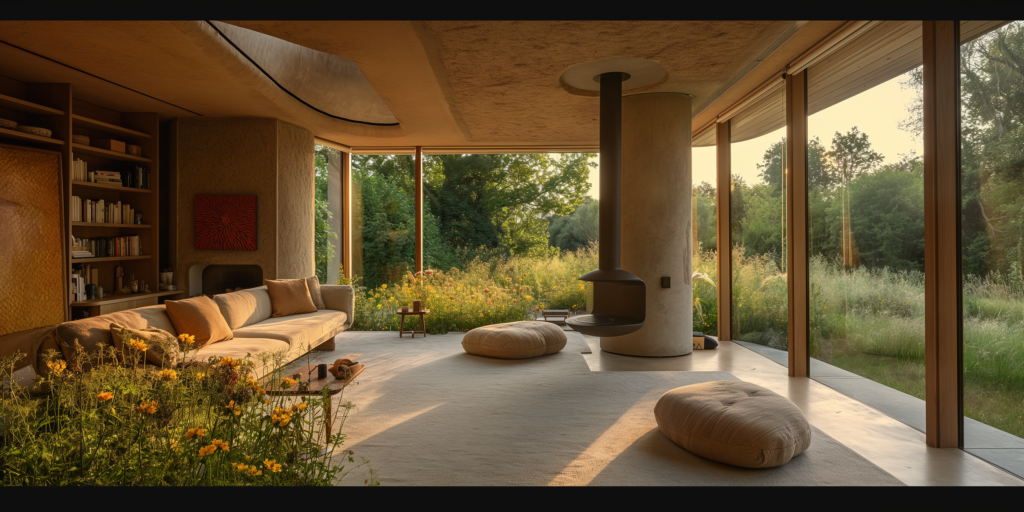
Why Hempcrete? Hempcrete is a biocomposite material made from the inner woody core of the hemp plant mixed with a lime-based binder. It is lightweight, highly insulating, and has excellent thermal and acoustic properties. Additionally, hemp absorbs CO2 as it grows, making hempcrete a carbon-negative material.
Applications in Sustainable Homes:
- Insulation: Hempcrete provides superior insulation, maintains comfortable indoor temperatures, and reduces energy consumption.
- Walls: Hempcrete can construct non-load-bearing walls, offering excellent thermal performance and breathability.
- Soundproofing: Its acoustic properties make hempcrete ideal for soundproofing interior spaces.
5. Recycled Glass
Why Recycled Glass? Recycled glass is made from crushed and reprocessed post-consumer waste, such as bottles and windows. This process significantly reduces landfill waste and the energy required to produce new glass. Recycled glass can be fashioned into various building materials with unique and attractive finishes.
Applications in Sustainable Homes:
- Countertops: Recycled glass countertops offer a durable and visually striking alternative to traditional materials.
- Tiles: Glass tiles made from recycled materials are perfect for backsplashes and bathrooms.
- Insulation: Recycled glass can produce foam glass, an excellent insulating material.
6. Cork
Why Cork? Cork is harvested from the bark of the cork oak tree, which regenerates after harvesting, making it a highly renewable resource. It is also biodegradable, lightweight, and has excellent thermal and acoustic insulation properties.
Applications in Sustainable Homes:
- Flooring: Cork flooring is soft underfoot, durable, and provides good thermal and acoustic insulation.
- Wall Coverings: Cork wall panels add texture and insulation to interior spaces.
- Insulation: Cork boards can be used as an insulating material in walls, floors, and roofs.
7. Rammed Earth
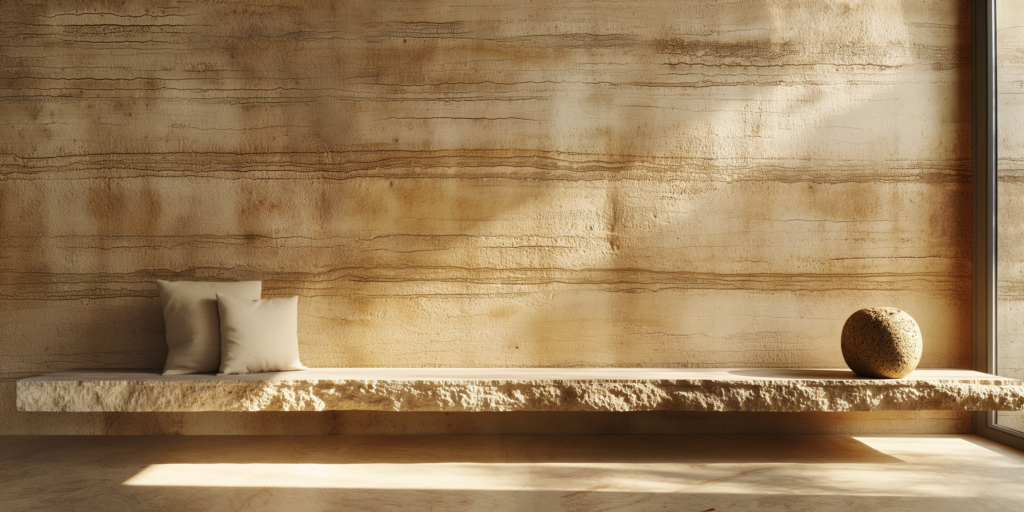
Why Rammed Earth? Rammed earth is a technique that involves compacting a mixture of earth, sand, and clay into a solid, load-bearing wall. It is highly durable, has excellent thermal mass properties, and is sourced from natural materials.
Applications in Sustainable Homes:
- Walls: Rammed earth walls provide excellent thermal mass, helping to regulate indoor temperatures.
- Foundations: It can be used for stable and durable foundations.
- Aesthetic Features: The natural look of rammed earth adds a unique, earthy aesthetic to homes.
8. Straw Bales
Why Straw Bales? Straw bales are an agricultural byproduct that can be used as a highly effective building material. They offer excellent insulation, are renewable, and are often sourced locally, reducing transportation emissions.
Applications in Sustainable Homes:
- Insulation: Straw bales provide outstanding thermal insulation, keeping homes warm in winter and cool in summer.
- Wall Construction: Straw bale walls are thick and provide good soundproofing and fire resistance.
- Sustainable Architecture: They can be used for sustainable building projects in load-bearing or infill-wall systems.
9. Mycelium
Why Mycelium? Mycelium, the root structure of fungi, is a revolutionary biomaterial that is biodegradable and can be grown into various shapes and forms. It is lightweight and insulating and can be a sustainable alternative to traditional building materials.
Applications in Sustainable Homes:
- Insulation: Mycelium-based insulation panels offer excellent thermal and acoustic properties.
- Building Blocks: Mycelium can be moulded into bricks and blocks for construction.
- Furniture and Decor: Its versatility allows for innovative furniture and decorative elements.
10. Ferrock
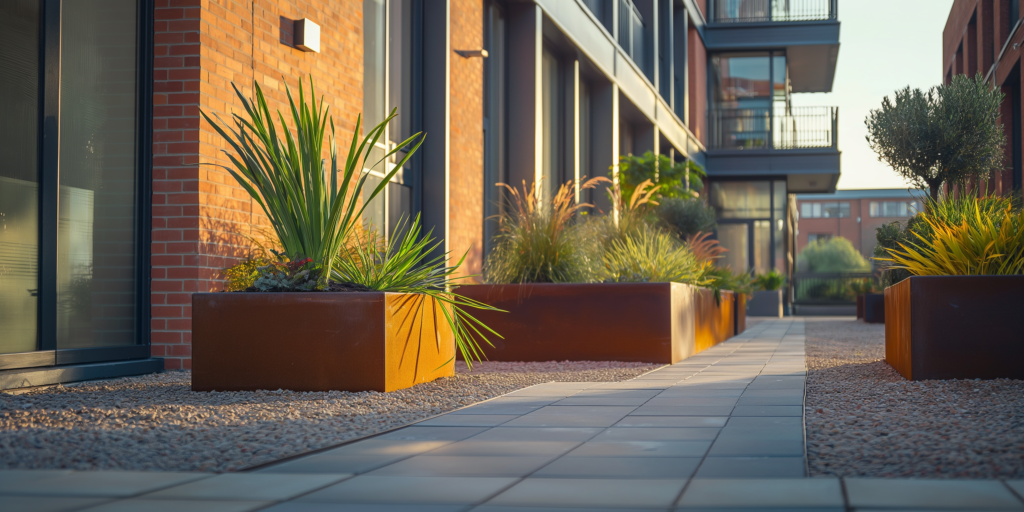
Why Ferrock? Ferrock is a carbon-negative material made from recycled steel dust and silica. It is stronger than concrete and absorbs CO2 during the curing process, making it an environmentally friendly alternative to traditional concrete.
Applications in Sustainable Homes:
- Foundations: Ferrock can be used in place of concrete for foundations and structural elements.
- Paving: It is ideal for paving and other outdoor applications due to its durability.
- Construction: Ferrock can be used in various structural components, offering strength and sustainability.
Final Thoughts
Incorporating green building materials in construction is not just a trend but a necessity for the future of sustainable living. These materials significantly reduce the environmental impact of building processes, enhance energy efficiency, and create healthier living spaces. By leveraging materials like bamboo, reclaimed wood, recycled steel, and innovative options like mycelium and ferrock, architects and builders can power sustainable homes that harmonise beauty, functionality, and ecological responsibility. Embracing these materials is a step toward a greener, more sustainable future in architecture.
As we progress, the continued innovation and adoption of green building materials will play a pivotal role in shaping the built environment. We contribute to a more sustainable, resilient, and aesthetically pleasing world by integrating these materials into our designs. Let’s continue to push the boundaries of what’s possible in sustainable architecture, ensuring that our homes and buildings stand the test of time and protect and enhance our planet for future generations.


